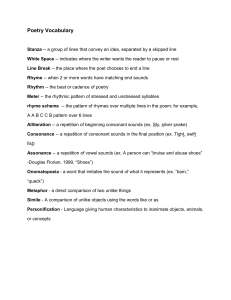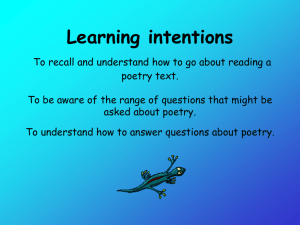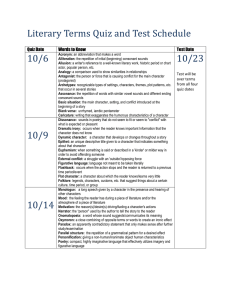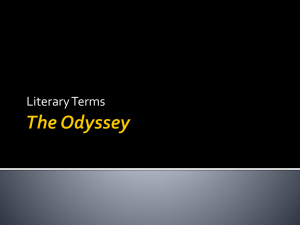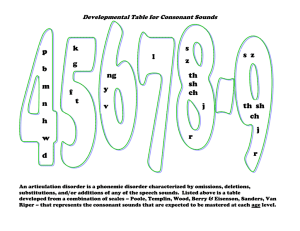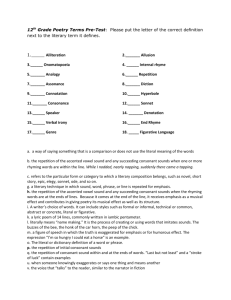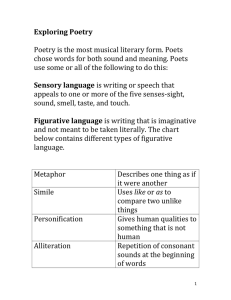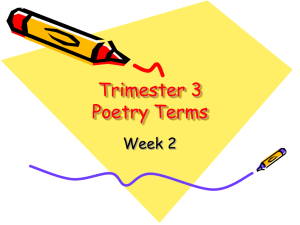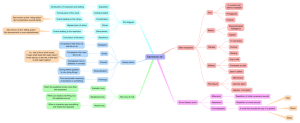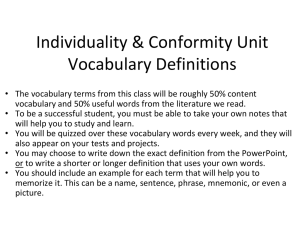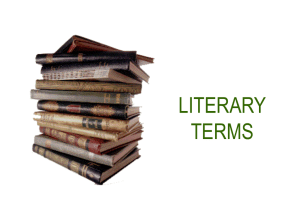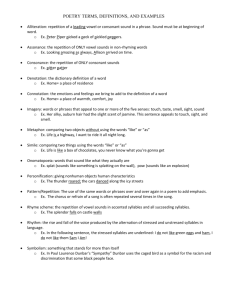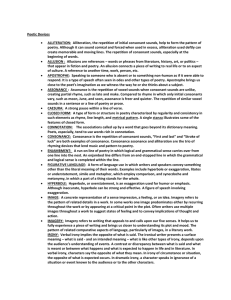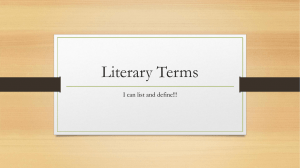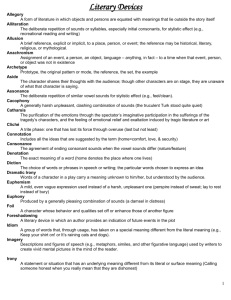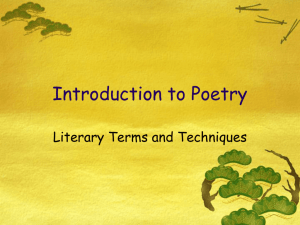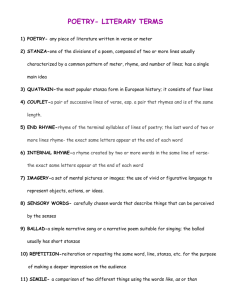Sophomore Poetry Vocabulary List: PDF Document
advertisement
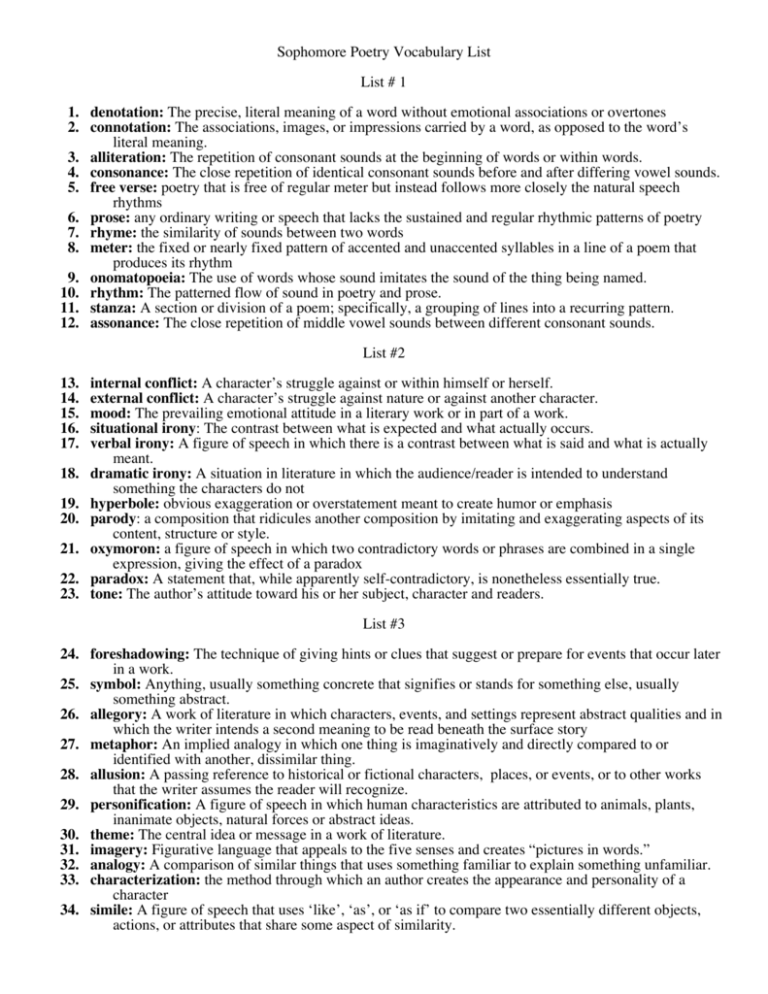
Sophomore Poetry Vocabulary List List # 1 1. denotation: The precise, literal meaning of a word without emotional associations or overtones 2. connotation: The associations, images, or impressions carried by a word, as opposed to the word’s literal meaning. 3. alliteration: The repetition of consonant sounds at the beginning of words or within words. 4. consonance: The close repetition of identical consonant sounds before and after differing vowel sounds. 5. free verse: poetry that is free of regular meter but instead follows more closely the natural speech rhythms 6. prose: any ordinary writing or speech that lacks the sustained and regular rhythmic patterns of poetry 7. rhyme: the similarity of sounds between two words 8. meter: the fixed or nearly fixed pattern of accented and unaccented syllables in a line of a poem that produces its rhythm 9. onomatopoeia: The use of words whose sound imitates the sound of the thing being named. 10. rhythm: The patterned flow of sound in poetry and prose. 11. stanza: A section or division of a poem; specifically, a grouping of lines into a recurring pattern. 12. assonance: The close repetition of middle vowel sounds between different consonant sounds. List #2 13. 14. 15. 16. 17. 18. 19. 20. 21. 22. 23. internal conflict: A character’s struggle against or within himself or herself. external conflict: A character’s struggle against nature or against another character. mood: The prevailing emotional attitude in a literary work or in part of a work. situational irony: The contrast between what is expected and what actually occurs. verbal irony: A figure of speech in which there is a contrast between what is said and what is actually meant. dramatic irony: A situation in literature in which the audience/reader is intended to understand something the characters do not hyperbole: obvious exaggeration or overstatement meant to create humor or emphasis parody: a composition that ridicules another composition by imitating and exaggerating aspects of its content, structure or style. oxymoron: a figure of speech in which two contradictory words or phrases are combined in a single expression, giving the effect of a paradox paradox: A statement that, while apparently self-contradictory, is nonetheless essentially true. tone: The author’s attitude toward his or her subject, character and readers. List #3 24. foreshadowing: The technique of giving hints or clues that suggest or prepare for events that occur later in a work. 25. symbol: Anything, usually something concrete that signifies or stands for something else, usually something abstract. 26. allegory: A work of literature in which characters, events, and settings represent abstract qualities and in which the writer intends a second meaning to be read beneath the surface story 27. metaphor: An implied analogy in which one thing is imaginatively and directly compared to or identified with another, dissimilar thing. 28. allusion: A passing reference to historical or fictional characters, places, or events, or to other works that the writer assumes the reader will recognize. 29. personification: A figure of speech in which human characteristics are attributed to animals, plants, inanimate objects, natural forces or abstract ideas. 30. theme: The central idea or message in a work of literature. 31. imagery: Figurative language that appeals to the five senses and creates “pictures in words.” 32. analogy: A comparison of similar things that uses something familiar to explain something unfamiliar. 33. characterization: the method through which an author creates the appearance and personality of a character 34. simile: A figure of speech that uses ‘like’, ‘as’, or ‘as if’ to compare two essentially different objects, actions, or attributes that share some aspect of similarity.
